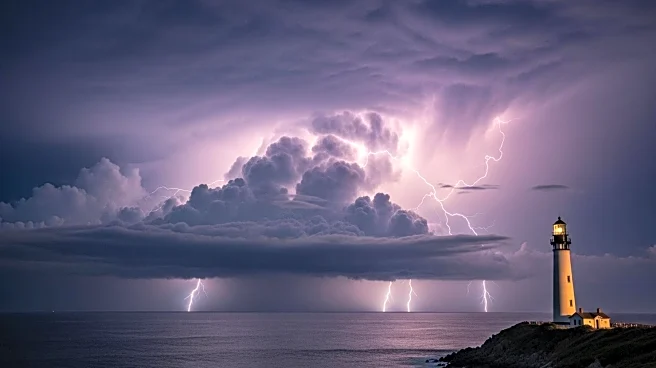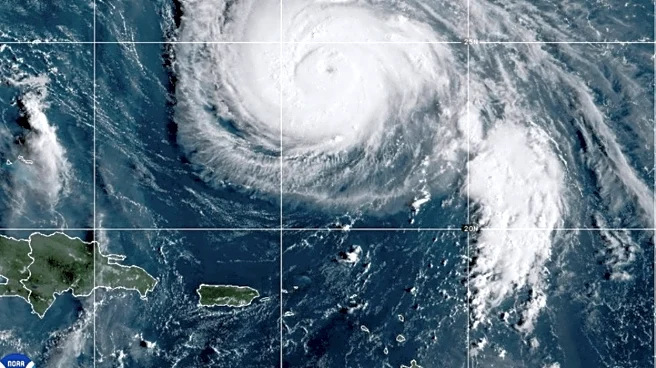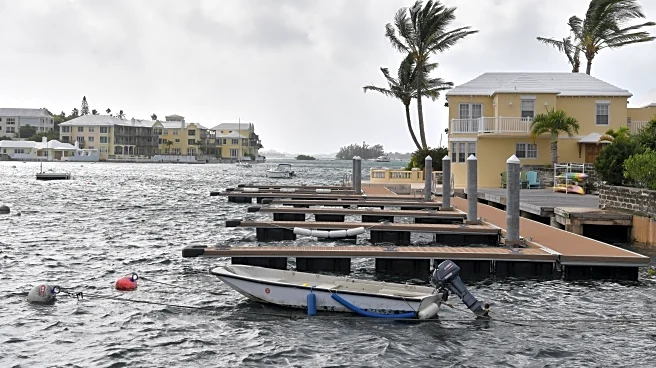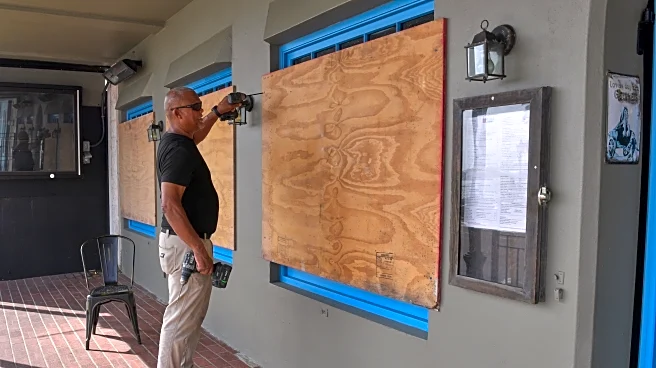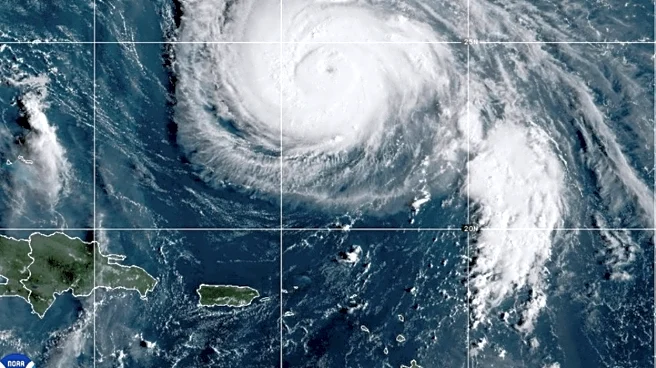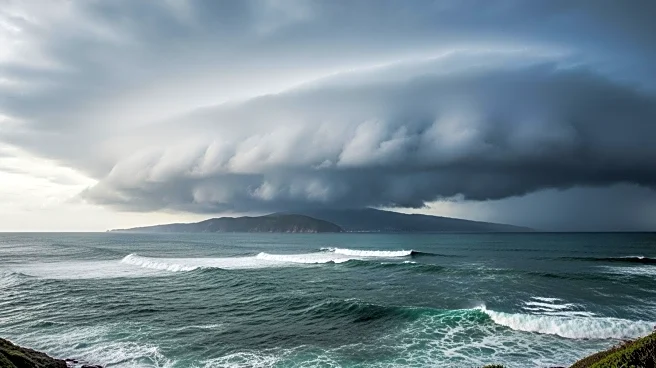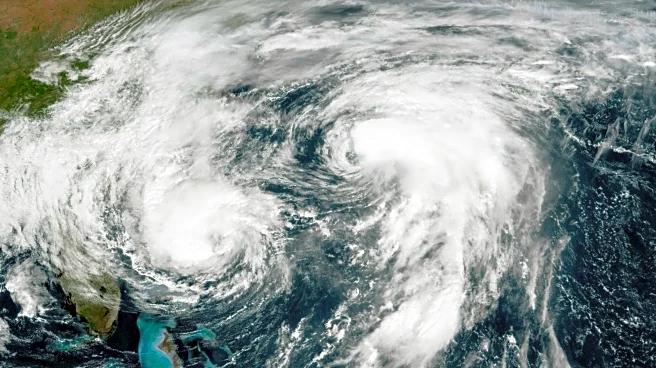What is the story about?
What's Happening?
Hurricane Imelda has significantly impacted Bermuda with powerful winds, heavy rain, and massive waves, although it did not make landfall. The hurricane, which briefly reached Category 2 strength, passed south of the island, causing damage such as downed trees and power lines. As Imelda moves away, Bermuda remains under a Tropical Storm Warning, with assessment crews working to evaluate and restore affected areas. The National Hurricane Center reports that Imelda is weakening and is expected to become extratropical. Despite the hurricane's departure, massive waves and dangerous surf conditions continue to affect Bermuda, the Bahamas, and the U.S. East Coast, posing risks of deadly rip currents.
Why It's Important?
The impact of Hurricane Imelda highlights the ongoing vulnerability of coastal regions to severe weather events. The storm's effects extend beyond Bermuda, with the U.S. East Coast experiencing dangerous surf and rip currents. These conditions have already resulted in fatalities, including a drowning incident in Florida. The hurricane season, which runs until November 30, continues to pose threats to coastal communities, emphasizing the need for preparedness and effective response strategies. The economic and social implications are significant, as communities must address damage and ensure public safety amid ongoing weather challenges.
What's Next?
As Hurricane Imelda weakens, attention shifts to recovery efforts in Bermuda and monitoring ongoing weather conditions along the U.S. East Coast. Authorities are urging the public to remain cautious and avoid hazardous areas. The continuation of the Atlantic hurricane season suggests that further storms could develop, necessitating vigilance and readiness from both local governments and residents. The focus will be on mitigating risks and ensuring swift recovery from any future weather-related disruptions.
Beyond the Headlines
The recurring impact of hurricanes like Imelda underscores the broader challenges posed by climate change, which is believed to increase the frequency and intensity of such storms. This situation calls for enhanced infrastructure resilience and adaptive strategies to protect vulnerable regions. Additionally, the economic burden of repeated storm damage highlights the need for sustainable investment in disaster preparedness and recovery efforts.
AI Generated Content
Do you find this article useful?
